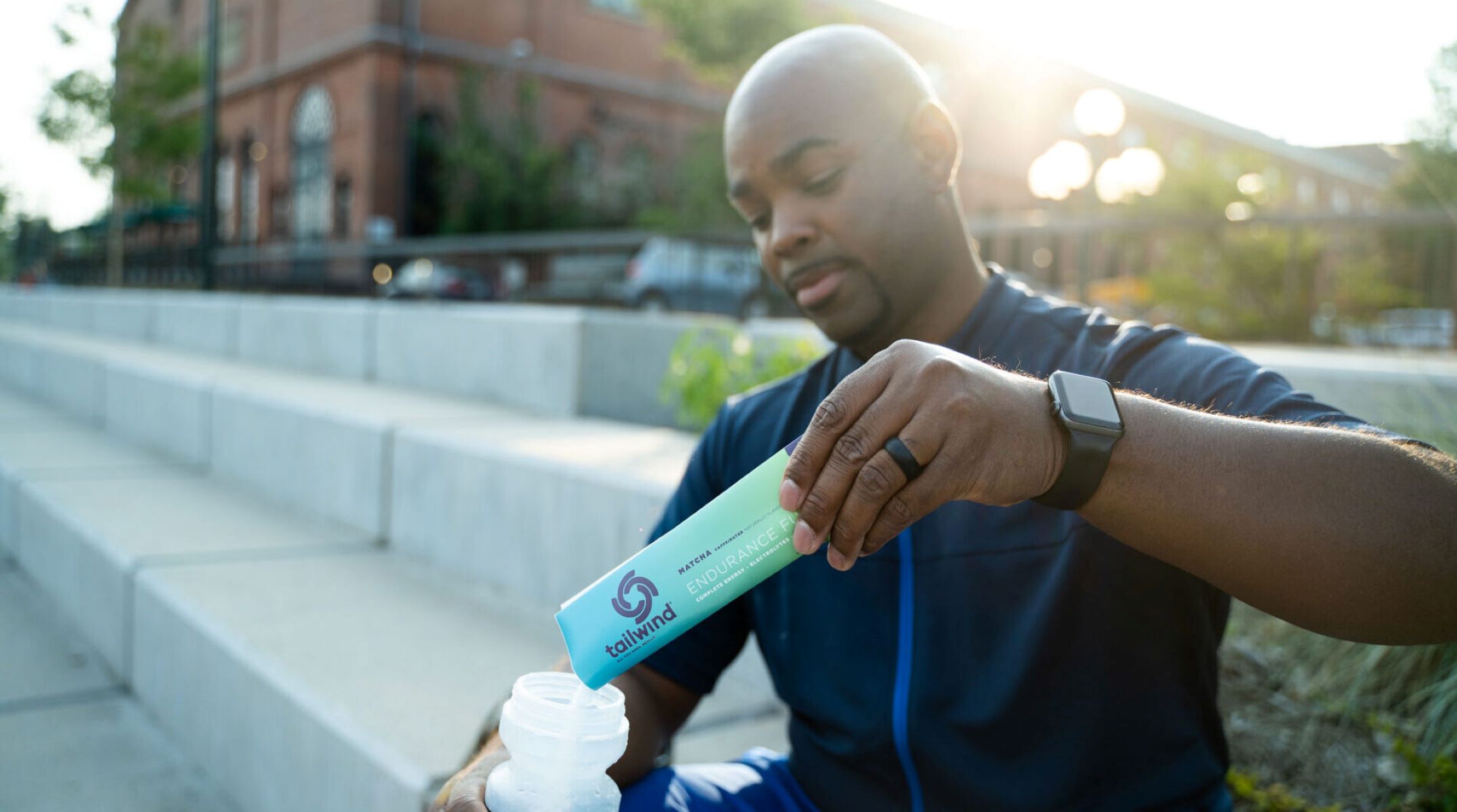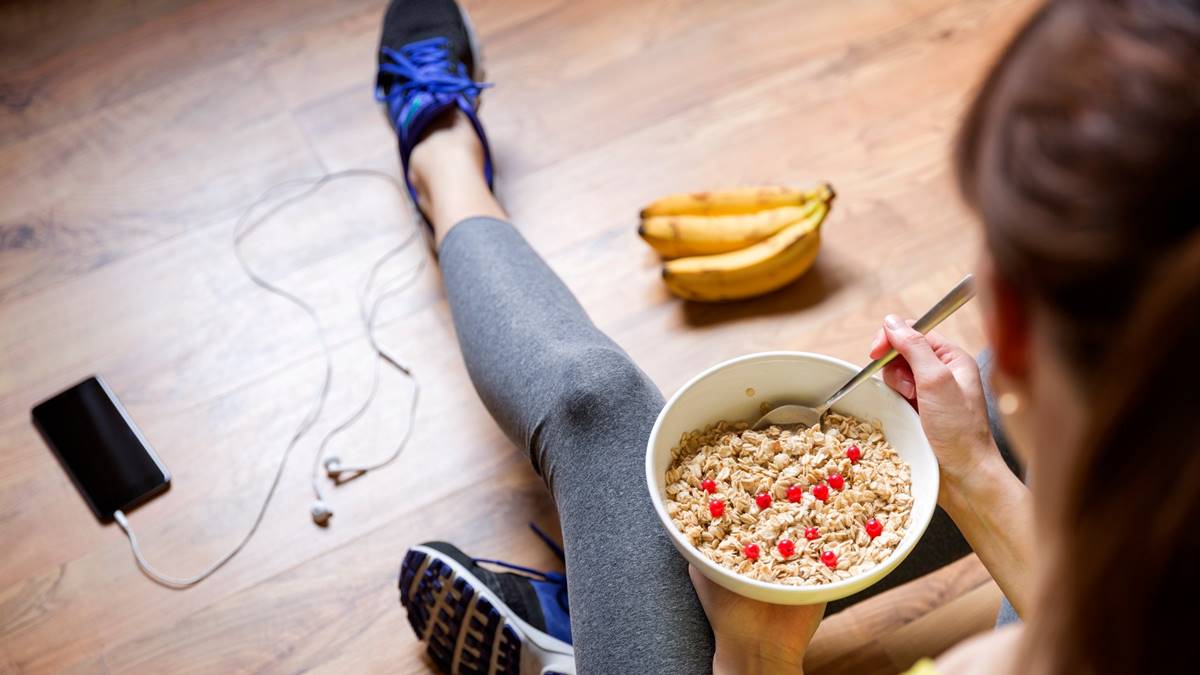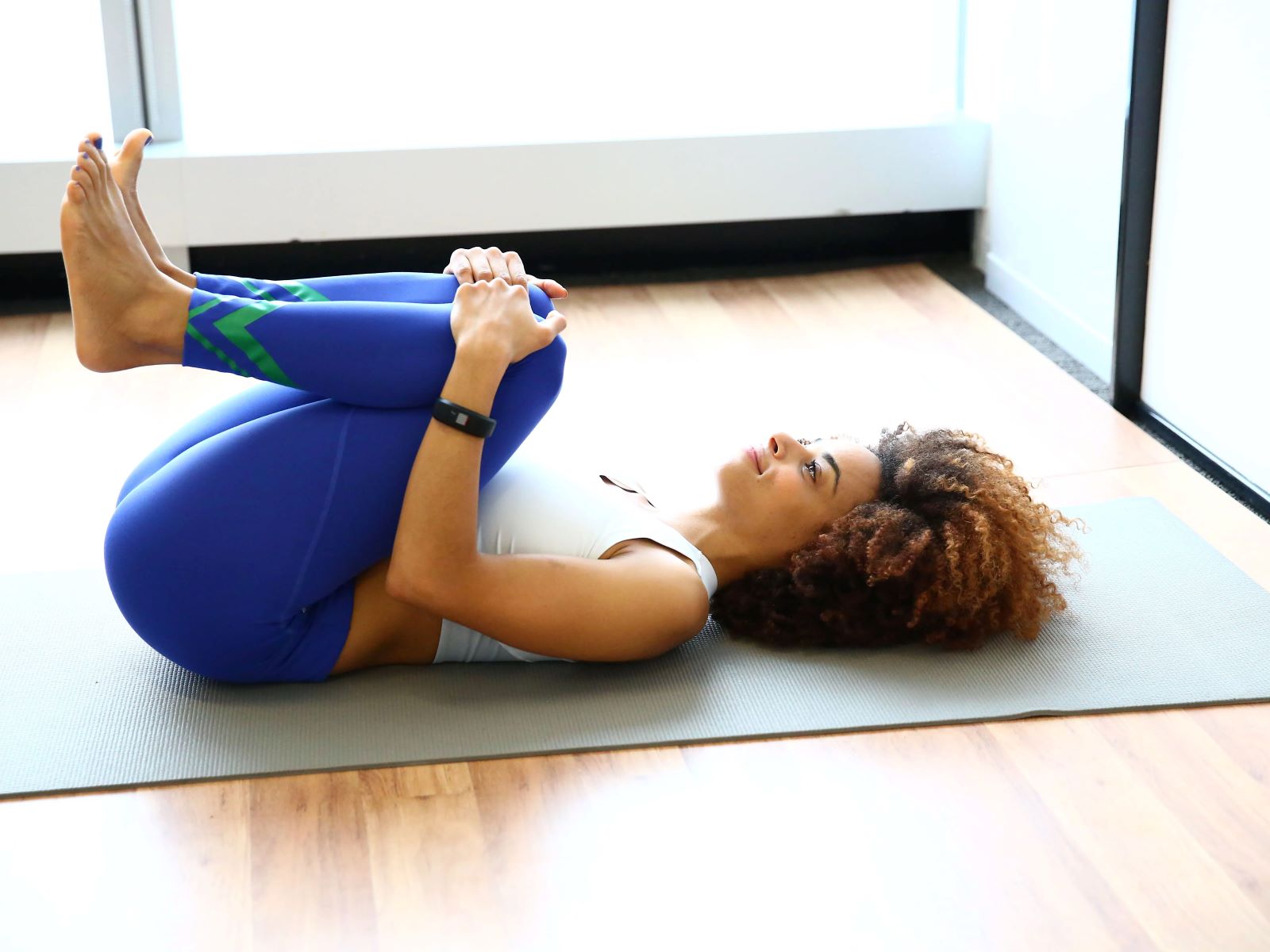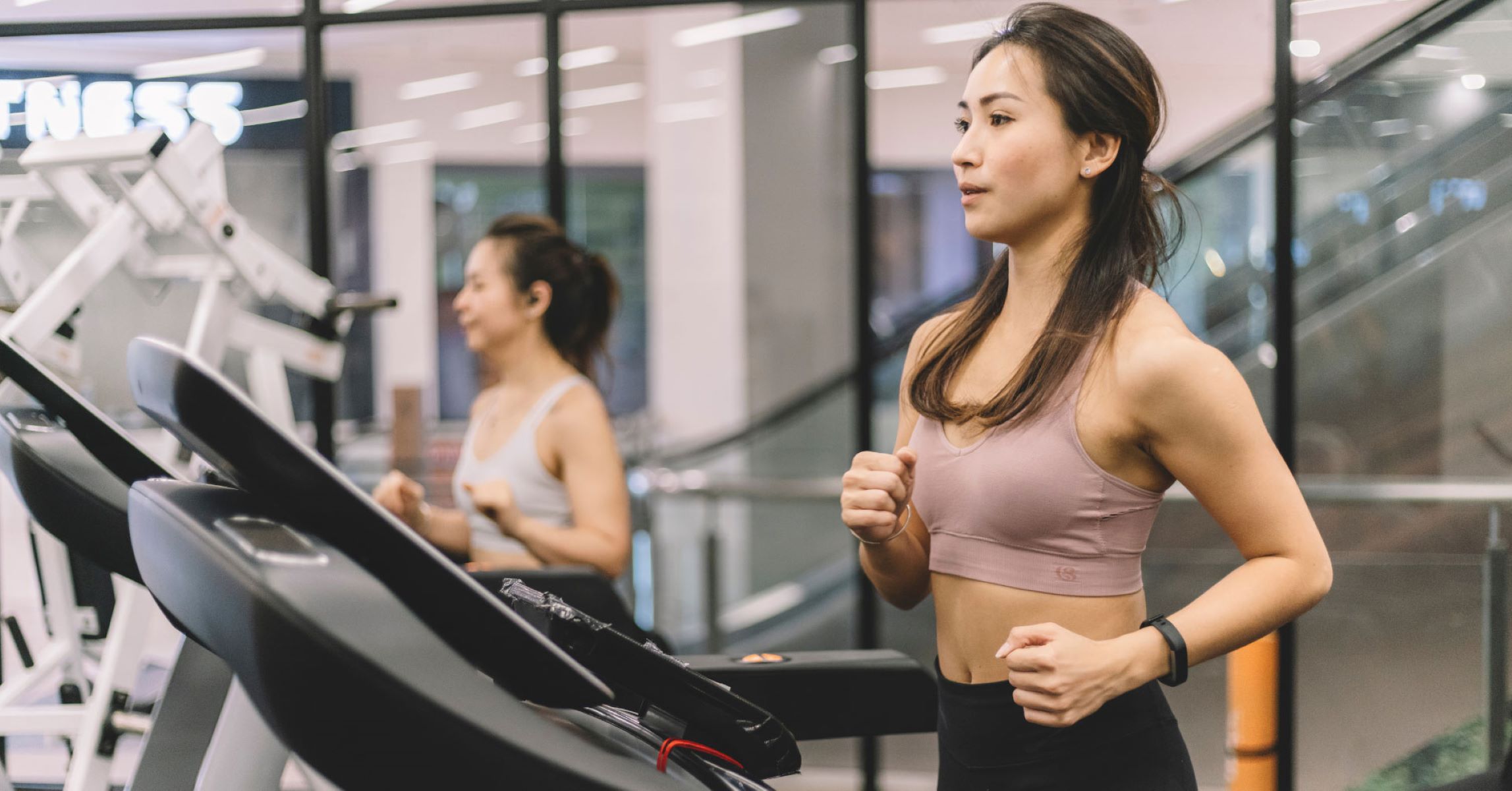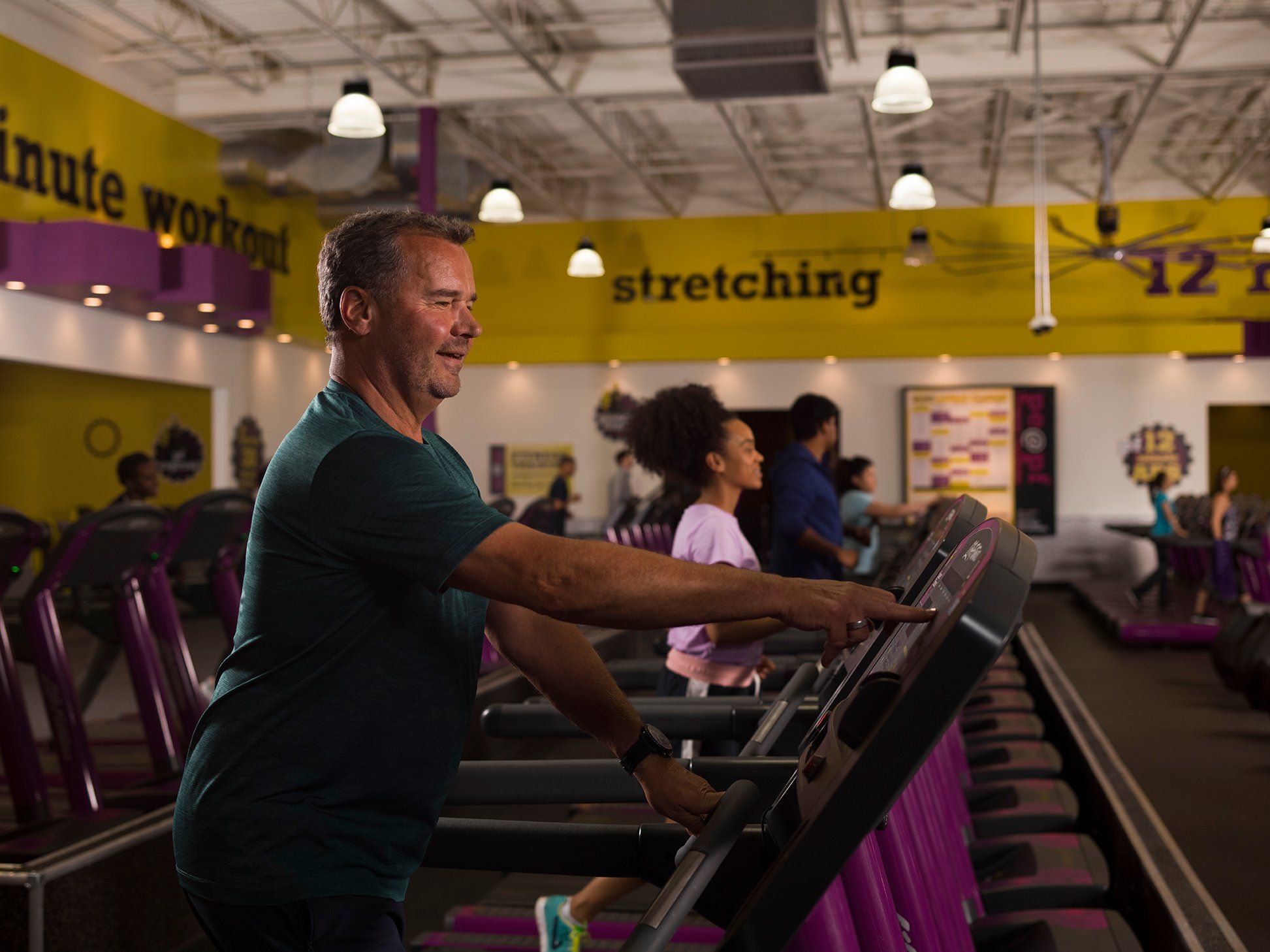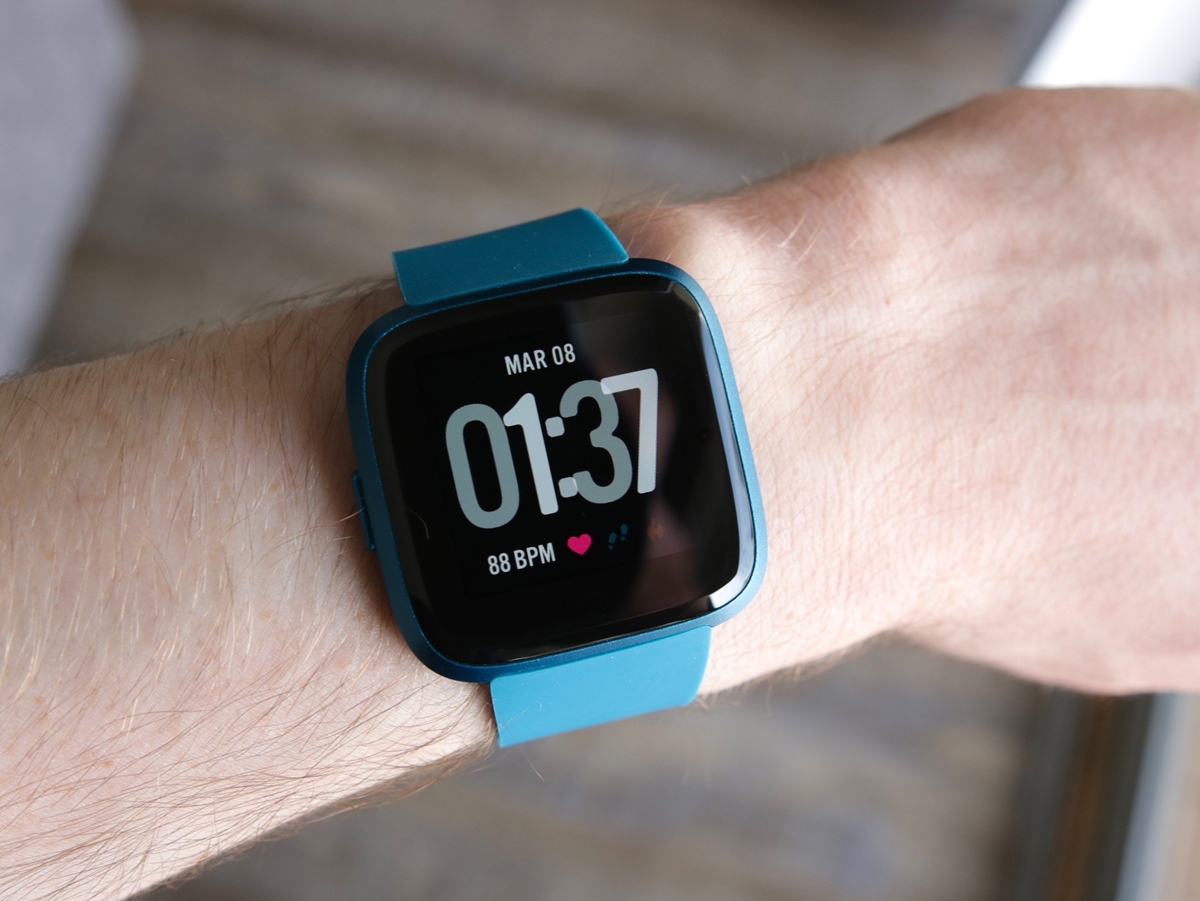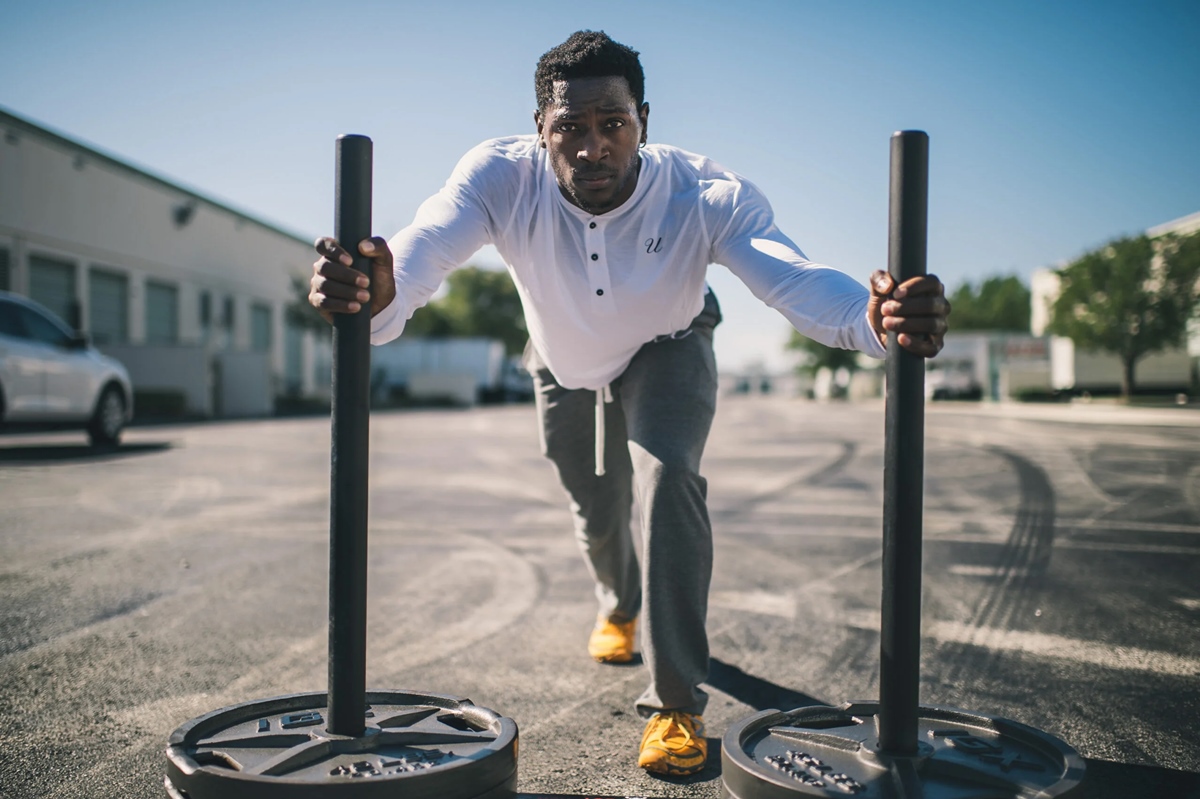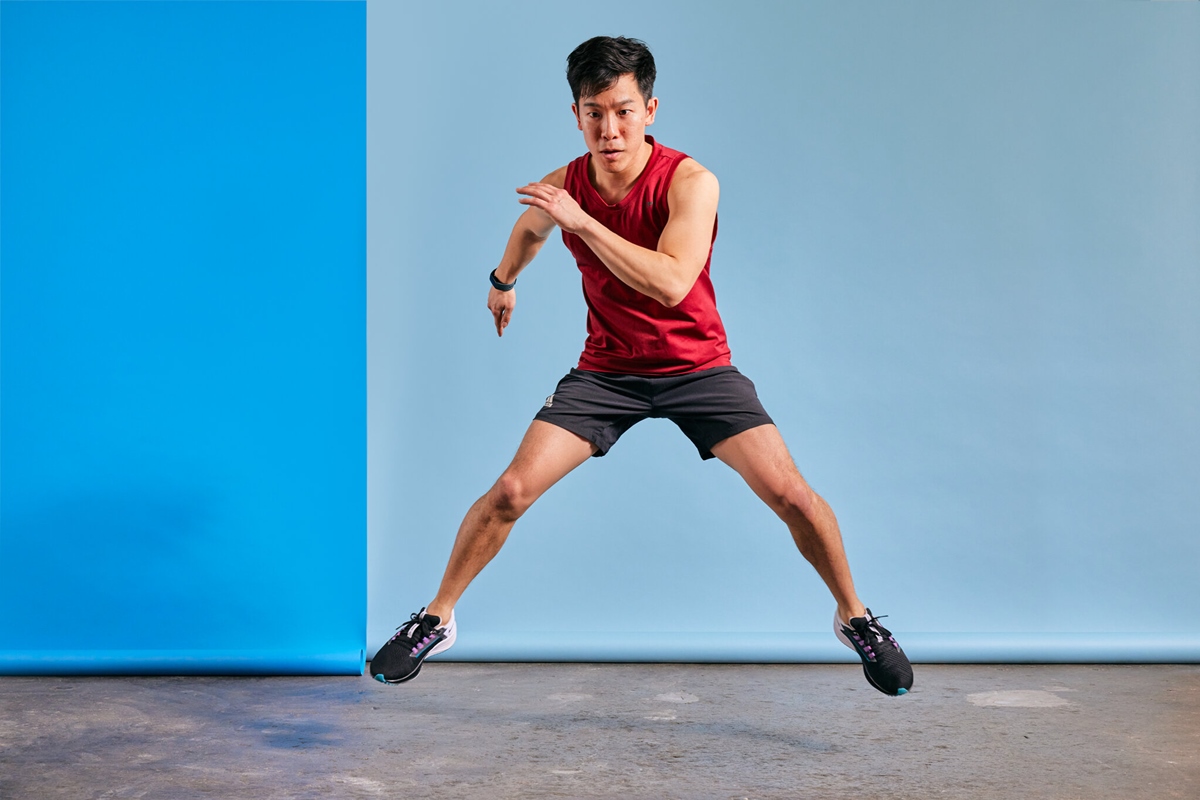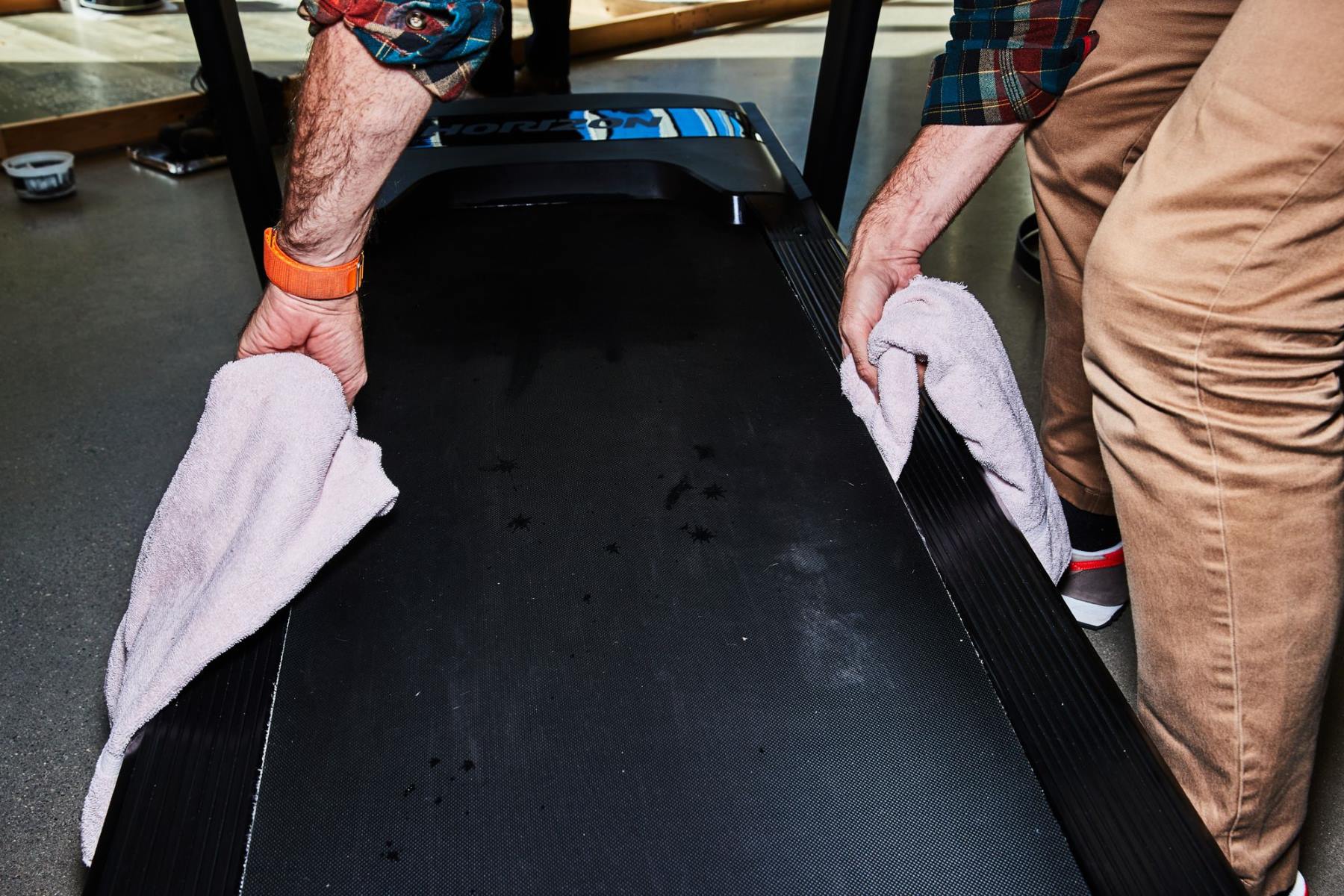Home>Misc>Featured>How To Prevent Rhabdomyolysis After Workout
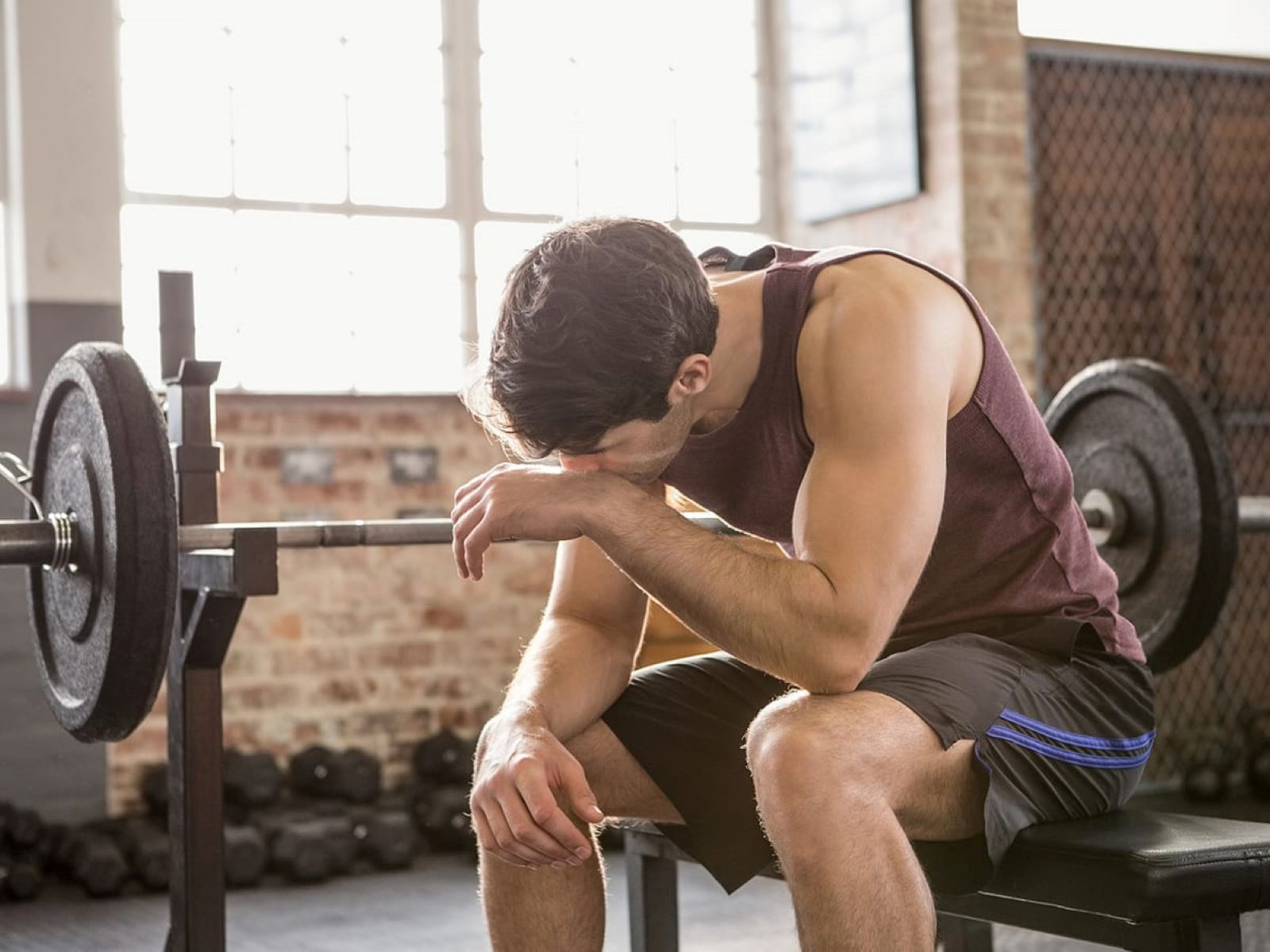

Featured
How To Prevent Rhabdomyolysis After Workout
Modified: October 18, 2023
Learn the best techniques to prevent rhabdo after workouts and stay safe. Featured tips and strategies for avoiding this dangerous condition.
Introduction
No pain, no gain. That’s the motto many fitness enthusiasts live by when it comes to their workouts. Pushing your limits and challenging yourself is a key part of achieving fitness goals. However, it’s crucial to recognize the fine line between pushing yourself and pushing too hard, as it can have serious consequences for your health.
One such consequence is rhabdomyolysis, commonly known as rhabdo. Rhabdo is a condition in which muscle tissues break down rapidly, releasing toxic substances into the bloodstream. It is often caused by intense physical exertion and can lead to severe complications, including kidney damage or even failure.
While rhabdo is most commonly associated with extreme workouts or military training, it can occur in individuals of all fitness levels. The good news is that with proper precautions and awareness, you can significantly reduce the risk of developing rhabdo after a workout.
In this article, we will explore the causes, symptoms, and prevention of rhabdo. We will provide you with practical tips and strategies to ensure your workouts are effective, safe, and devoid of any rhabdo-related risks. By understanding the importance of gradual progression, hydration, warm-up, and listening to your body, you can prevent rhabdo and stay on track towards your fitness goals.
Understanding Rhabdo
Rhabdomyolysis, or rhabdo for short, is a condition in which muscle fibers break down, releasing a protein called myoglobin into the bloodstream. Myoglobin is toxic to the kidneys, and if not promptly treated, can lead to kidney damage or even failure.
Rhabdo is typically caused by intense physical exertion that overwhelms the body’s ability to repair and recover. It can occur in various situations, including high-intensity workouts, endurance activities, and even during military training. However, it’s important to note that rhabdo can affect individuals of all fitness levels, not just those engaging in extreme physical activities.
The breakdown of muscle fibers and the release of myoglobin occur when the demand placed on the muscles exceeds their capacity. This can happen due to a sudden increase in exercise intensity, excessive repetition of the same movements, or inadequate rest and recovery between workouts.
Although muscle soreness is a common occurrence after exercise, rhabdo symptoms go beyond typical post-workout aches. Some of the common signs and symptoms of rhabdo include severe muscle pain, swelling, weakness, dark-colored urine, and in severe cases, nausea, vomiting, confusion, and even loss of consciousness. If you experience any of these symptoms after a workout, it’s crucial to seek medical attention immediately.
It’s also essential to understand the factors that can increase the risk of developing rhabdo. These factors include dehydration, electrolyte imbalances, heat exhaustion, certain medications, and underlying medical conditions such as sickle cell trait or renal dysfunction. Being aware of these risk factors can help you take necessary precautions to prevent rhabdo and ensure your well-being during and after exercise.
Common Causes and Risk Factors
Rhabdomyolysis, or rhabdo, can be caused by various factors that surpass the body’s ability to handle intense physical exertion. Understanding these causes and risk factors can help you take proactive steps to prevent rhabdo and ensure your safety during workouts.
One of the most common causes of rhabdo is an abrupt increase in exercise intensity or duration. Pushing yourself too hard, too quickly can lead to muscle breakdown and the release of toxic substances into the bloodstream. This can occur if you suddenly start a new workout routine, increase the weight or resistance too rapidly, or engage in repetitive high-intensity exercises without allowing your body enough time to adapt and recover.
Dehydration is another significant risk factor for rhabdo. Inadequate hydration can impair the body’s ability to regulate temperature, leading to overheating and increased stress on the muscles. When the body is dehydrated, it also becomes more prone to electrolyte imbalances, which can further contribute to muscle damage and rhabdomyolysis.
Some medications and medical conditions can increase the risk of developing rhabdo. Certain drugs, such as statins, used to manage high cholesterol, may have rhabdo as a potential side effect. Additionally, individuals with pre-existing medical conditions like sickle cell trait or renal dysfunction may be more susceptible to rhabdo. It’s crucial to consult with your healthcare provider if you have any concerns about your health and how it may be affected by intense exercise.
Exercising in extreme heat or high humidity can also be a risk factor for rhabdo. When the body is exposed to excessive heat, it struggles to dissipate the generated heat, leading to an increase in core body temperature. This heat stress can further strain the muscles and contribute to rhabdo development.
By understanding these common causes and risk factors, you can take appropriate precautions to prevent rhabdo. Gradually progress in your workouts, stay well-hydrated, and be aware of any medications or medical conditions that may increase your susceptibility to rhabdomyolysis. Being mindful of these factors will help you maintain a healthy and safe exercise routine.
Signs and Symptoms
Recognizing the signs and symptoms of rhabdomyolysis is crucial in ensuring prompt medical attention and preventing further complications. While muscle soreness is common after a workout, rhabdo symptoms go beyond the usual post-exercise aches and pains.
One of the primary symptoms of rhabdo is severe muscle pain and tenderness. The pain is often intense and can be felt in the affected muscles, making movements challenging and uncomfortable. Additionally, you may experience muscle weakness and a sense of fatigue or exhaustion despite minimal exertion.
Swelling and stiffness in the muscles can also be indicative of rhabdomyolysis. The affected muscles may feel tight and appear visibly swollen. It’s important to note any changes in muscle appearance or texture, as these can be signs of muscle breakdown.
One of the most characteristic symptoms of rhabdo is the presence of dark-colored urine, often described as “tea-colored” or “cola-colored.” This discoloration is caused by the presence of myoglobin, a muscle protein, in the urine. Dark urine can be an alarming sign of significant muscle breakdown and should be taken seriously.
In severe cases of rhabdomyolysis, individuals may experience additional symptoms such as nausea, vomiting, confusion, and even loss of consciousness. These symptoms indicate a more advanced stage of rhabdo and require immediate medical attention.
If you experience any of these symptoms after a workout, it’s crucial to seek medical help as soon as possible. Rhabdomyolysis can cause severe complications, including kidney damage and failure, if left untreated. By being aware of the signs and symptoms, you can ensure timely intervention and prevent further harm to your health.
Importance of Proper Hydration
Proper hydration is not only essential for overall health but also plays a significant role in preventing rhabdomyolysis. Dehydration can increase the risk of muscle breakdown and impair the body’s ability to regulate temperature, leading to an increased risk of heat-related injuries.
During exercise, especially intense and prolonged workouts, the body loses water through sweat. This loss of fluids can quickly lead to dehydration if not replenished adequately. When the body is dehydrated, it becomes more prone to electrolyte imbalances, which can further contribute to muscle damage and rhabdo.
To ensure proper hydration during workouts, it’s important to drink water before, during, and after exercise. The American Council on Exercise recommends consuming 17 to 20 ounces of water two to three hours before a workout and sipping on 7 to 10 ounces of water every 10 to 20 minutes during exercise. After your workout, replenish fluids by drinking an additional 16 to 24 ounces of water for every pound lost during exercise.
Hydration is not solely dependent on water intake, but also on electrolytes. Electrolytes, such as sodium, potassium, and magnesium, help maintain the body’s fluid balance and optimize muscle function. Consuming electrolyte-rich fluids or sports drinks during exercise can help replenish these essential minerals and prevent electrolyte imbalances.
Keep in mind that individual hydration needs may vary depending on factors such as body weight, intensity of exercise, and environmental conditions. It’s important to listen to your body and drink when you are thirsty, as thirst is an indicator of dehydration. Aim to maintain a light yellow or clear urine color throughout the day, as dark-colored urine may indicate dehydration.
Proper hydration before, during, and after exercise is crucial to prevent rhabdomyolysis and ensure optimal performance. Make it a habit to carry a water bottle with you during workouts and prioritize hydrating your body. By staying hydrated, you support your muscles’ ability to function effectively and reduce the risk of muscle breakdown and related complications.
Gradual Progression in Training
Gradual progression in training is key to preventing rhabdomyolysis and ensuring long-term success in your fitness journey. Pushing yourself too hard or attempting exercises beyond your current fitness level can lead to muscle breakdown and the development of rhabdo.
When starting a new workout routine or incorporating new exercises into your program, it’s important to progress slowly and gradually. This allows your muscles, tendons, and connective tissues to adapt and become stronger over time.
Begin by focusing on proper form and technique rather than solely aiming for heavy weights or maximum repetitions. This will help you build a solid foundation and avoid unnecessary strain on your muscles.
Set realistic goals and increase the intensity, duration, or frequency of your workouts gradually. Aim to increase one variable at a time, such as the weight lifted or the number of repetitions, rather than trying to do it all at once.
It’s also crucial to allow adequate rest and recovery between workouts. Overtraining can increase the risk of muscle breakdown and rhabdo. Be sure to include rest days in your training schedule and listen to your body. If you’re experiencing persistent muscle soreness or fatigue, it may be a sign that you need more recovery time.
Furthermore, incorporating cross-training and variety in your workouts can help prevent overuse injuries and reduce the risk of rhabdomyolysis. By engaging in different types of exercises and targeting various muscle groups, you give your body the opportunity to adapt and avoid excessive strain on specific muscles.
Remember, Rome wasn’t built in a day, and neither is your fitness journey. Patience and consistency are key when it comes to preventing rhabdo. Take your time, progress at a pace that is suitable for your fitness level, and prioritize the health and well-being of your muscles.
Proper Warm-up and Cool-down
A proper warm-up and cool-down are essential components of any exercise routine and play a crucial role in preventing rhabdomyolysis. These pre and post-workout practices help prepare your body for exercise and aid in the recovery process, reducing the risk of muscle damage and related complications.
A warm-up typically consists of dynamic movements that increase blood flow, raise body temperature, and activate the muscles you’ll be using during your workout. It helps to gradually prepare your body for the upcoming physical demands. Engaging in activities such as light jogging, dynamic stretching, or performing specific exercises at a lower intensity can effectively warm up your muscles and improve their flexibility.
Performing a proper warm-up can increase your range of motion, improve muscular strength, and enhance overall performance during exercise. It provides your muscles with the necessary oxygen and nutrients to function optimally and reduces the risk of muscle strains or tears, which can contribute to rhabdo development.
Equally important is a cool-down session after your workout. This allows your body to gradually return to its resting state and promotes the removal of metabolic waste products from your muscles. Cooling down helps prevent blood pooling in your lower extremities and reduces the risk of dizziness or light-headedness.
A cooling-down routine may include low-intensity aerobic exercise, static stretching, or foam rolling to release muscle tension and promote recovery. By allowing your body to gradually return to its normal state, you aid in the repair and rebuilding process of the muscles, reducing the risk of muscle breakdown and the potential development of rhabdo.
Both warm-up and cool-down sessions should be tailored to your specific workout and fitness level. Spend at least 5-10 minutes on each to adequately prepare and recover your muscles. Remember to listen to your body during these sessions and adjust the intensity and duration as needed.
By incorporating proper warm-up and cool-down practices into your exercise routine, you provide your muscles with the best chance for optimal performance and recovery. These simple steps can go a long way in preventing rhabdomyolysis and maintaining a healthy and safe fitness regimen.
Listening to Your Body
One of the most important aspects of preventing rhabdomyolysis is listening to your body and understanding its cues. Paying attention to how you feel during and after exercise can help you gauge your limits, avoid overexertion, and prevent the development of muscle breakdown.
First and foremost, it’s essential to differentiate between muscle soreness and pain. Muscle soreness, also known as DOMS (Delayed Onset Muscle Soreness), is a natural response to exercise and typically occurs within 24-48 hours after a workout. It is characterized by a dull, achy sensation in the muscles and should subside with time and proper rest.
However, if you experience sharp or intense pain during exercise, it could be a sign of a potential injury or muscle strain. In such cases, it’s crucial to immediately stop the activity and seek appropriate medical attention. Pushing through pain can exacerbate the situation and increase the risk of rhabdomyolysis.
Additionally, be mindful of any unusual symptoms or changes in your body after a workout. If you notice persistent muscle weakness, excessive fatigue, rapid heartbeat, or dizziness, it may be an indication that you’ve pushed yourself too hard. Take these signs seriously and adjust your exercise intensity accordingly.
Rest and recovery are equally essential in preventing rhabdo. While it’s important to challenge yourself and push past your comfort zone, it’s equally important to give your body enough time to repair and rebuild. Overtraining and inadequate rest can contribute to muscle breakdown and rhabdomyolysis. Listen to your body when it’s telling you it needs rest, and incorporate rest days into your training schedule.
Remember that everyone’s body is unique, and what works for one person may not work for another. It’s important to understand and respect your own limitations. Pay attention to factors such as your energy levels, sleep quality, and overall well-being. If you’re feeling consistently exhausted or experiencing a decline in performance, it may be a sign that you need to adjust your training routine.
By listening to your body and honoring its needs, you can prevent rhabdomyolysis and create a sustainable and healthy fitness journey. Prioritizing self-awareness and self-care will help ensure that you can enjoy the benefits of exercise while avoiding the risks associated with overexertion.
Nutrition and Supplementation
Nutrition plays a crucial role in supporting your overall health and preventing rhabdomyolysis. Proper nutrition provides your body with the necessary nutrients, vitamins, and minerals to support muscle function, repair, and recovery.
First and foremost, it’s important to ensure that you’re consuming a balanced diet that includes a variety of nutrient-rich foods. Focus on incorporating lean proteins, whole grains, fruits, vegetables, and healthy fats into your meals. These foods provide essential amino acids, carbohydrates, antioxidants, and other nutrients that support muscle health and prevent muscle breakdown.
Protein, in particular, is important for muscle repair and recovery. Including an adequate amount of protein in your diet can help reduce muscle damage and promote muscle strength. Good sources of protein include lean meats, poultry, fish, eggs, dairy products, legumes, and plant-based proteins such as tofu and tempeh.
In addition to a balanced diet, certain supplements can support your muscles and help prevent rhabdomyolysis. However, it’s important to remember that supplements should not replace a healthy diet and are best used under the guidance of a healthcare professional or registered dietitian.
One supplement that may be beneficial is creatine. Creatine is an amino acid that naturally occurs in the body and helps provide energy to muscles during high-intensity exercise. Supplementing with creatine has been shown to enhance muscle strength and performance, reducing the risk of muscle breakdown. However, it’s essential to follow recommended dosages and consult a healthcare professional before starting any supplementation.
Another essential nutrient for muscle health is electrolytes. Especially during intense workouts or in hot weather, replenishing electrolytes is important to maintain proper hydration and prevent imbalances. Electrolyte supplements or sports drinks that contain potassium, sodium, magnesium, and other minerals can be beneficial in preventing dehydration, muscle cramps, and rhabdomyolysis.
Remember that everyone’s nutritional needs are unique, and the best approach is to consult with a healthcare professional or registered dietitian. They can assess your individual needs, considering factors such as your activity level, health status, and personal goals, and provide personalized recommendations on nutrition and supplementation.
By prioritizing a balanced diet and incorporating supplements when appropriate, you can provide your muscles with the necessary nutrients to support their health, prevent muscle breakdown, and reduce the risk of rhabdomyolysis.
Stretching and Mobility Exercises
Stretching and mobility exercises are essential for maintaining flexibility, preventing muscle imbalances, and reducing the risk of rhabdomyolysis. Incorporating these exercises into your regular routine can help improve your range of motion and enhance muscle function.
Dynamic stretching is an effective way to prepare your muscles for exercise and prevent rhabdo. These movements involve active, controlled motions that mimic the actions of the exercise you’ll be performing. Dynamic stretching helps increase blood flow to the muscles, improves joint mobility, and warms up the muscles in a dynamic fashion.
Examples of dynamic stretches include leg swings, arm circles, walking lunges, and bodyweight squats. They should be performed in a controlled and deliberate manner, gradually increasing the range of motion as the muscles become more warmed up.
After your workout, incorporating static stretching can help promote muscle recovery and prevent post-workout muscle stiffness. Static stretches involve holding a position for a prolonged period to elongate and relax the muscles.
It’s important to perform static stretches when the muscles are already warm, such as at the end of your workout or after a cool-down. Focus on targeting the major muscle groups you worked during your exercise session, holding each stretch for 15-30 seconds without bouncing or jerking.
In addition to stretching, incorporating mobility exercises can help improve joint range of motion and prevent muscle imbalances. Mobility exercises involve moving a joint through its full range of motion to enhance flexibility and stability.
Exercises such as hip circles, shoulder dislocations, and ankle mobility drills can improve joint mobility, reduce the risk of injury, and enhance overall movement quality. These exercises should be performed slowly and with control, focusing on maintaining proper form and alignment.
It’s important to note that stretching and mobility exercises should be done within your comfort zone and without forceful or excessive stretching. Straining or overstretching the muscles can lead to injury and increase the risk of muscle breakdown.
By incorporating stretching and mobility exercises into your workout routine, you promote muscle flexibility, joint mobility, and overall muscle health. This helps prevent muscle imbalances, reduce the risk of rhabdomyolysis, and enhance your overall performance and well-being.
Recovery and Rest Days
Recovery and rest days are essential components of a well-rounded fitness routine and play a vital role in preventing rhabdomyolysis. Giving your body time to rest and recover allows the muscles to repair, rebuild, and adapt to the physical stress induced by exercise.
When you engage in intense or prolonged workouts, your muscles undergo microscopic damage. These micro-tears, although normal and necessary for muscle growth, require time and proper rest to heal.
Rest days provide an opportunity for your body to repair damaged tissues, replenish energy stores, and restore optimal function. They also help prevent overtraining and reduce the risk of muscle breakdown and rhabdomyolysis.
Incorporating rest days into your training program is essential, regardless of your fitness level. Aim to have at least one to two rest days per week, allowing your body to recover and rejuvenate.
On rest days, it’s recommended to engage in light activities or active recovery rather than intense workouts. Activities such as yoga, walking, swimming, or gentle stretching can help promote blood flow, reduce muscle soreness, and enhance overall recovery.
Sleep is another crucial aspect of recovery. During sleep, your body undergoes essential processes that support muscle repair and growth. Aim for seven to eight hours of quality sleep each night, prioritizing a consistent sleep schedule to optimize recovery.
In addition to rest days, it’s important to listen to your body and adjust your training when needed. If you’re experiencing persistent muscle soreness, fatigue, or a decline in performance, it may be a sign that you need more rest or recovery time.
Active recovery techniques such as foam rolling, massage, or using a percussion massager can also aid in muscle recovery by increasing blood circulation and reducing muscle tension and soreness.
Remember, recovery is just as important as the workouts themselves. By allowing your body enough time to rest and recover, you promote muscle health, prevent overtraining, and reduce the risk of rhabdomyolysis. Prioritize recovery as an integral part of your fitness journey for long-term success and well-being.
Conclusion
Preventing rhabdomyolysis after a workout requires a multi-faceted approach that prioritizes safety, awareness, and self-care. By understanding the causes, symptoms, and risk factors of rhabdo, you can take proactive steps to protect your muscles and overall health.
Proper hydration is crucial to maintain muscle function and prevent dehydration, which can contribute to muscle breakdown. Gradual progression in training, with a focus on form, technique, and adequate rest, helps to prevent overexertion and reduce the risk of rhabdomyolysis.
Engaging in a well-rounded warm-up and cool-down routine prepares your muscles for exercise and aids in the recovery process, preventing potential muscle damage. Listening to your body, recognizing the signs and symptoms of rhabdo, and adjusting your workouts accordingly are essential for preventing further complications.
Nutrition and supplementation also play a significant role in supporting muscle health. A balanced diet and appropriate supplementation can provide the necessary nutrients to prevent muscle breakdown and optimize recovery.
Stretching and mobility exercises contribute to maintaining muscle flexibility and preventing imbalances. By incorporating these exercises into your routine, you enhance joint mobility and reduce the risk of muscle strains or tears.
Finally, rest and recovery days are vital for allowing your muscles to repair and rebuild. Giving your body time to rest and restore energy stores reduces the risk of overtraining and rhabdomyolysis.
Remember, every individual’s body is unique, and it’s important to listen to your own body’s needs. Consulting with healthcare professionals, registered dietitians, or fitness experts can provide personalized guidance specific to your situation.
By implementing these strategies and focuses into your fitness routine, you can take proactive measures to prevent rhabdomyolysis and maintain a healthy and safe exercise regimen. Prioritize your muscle health, listen to your body, and enjoy the benefits of exercise while minimizing risks.
